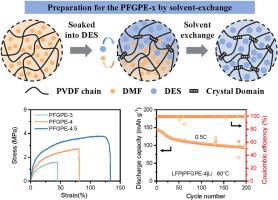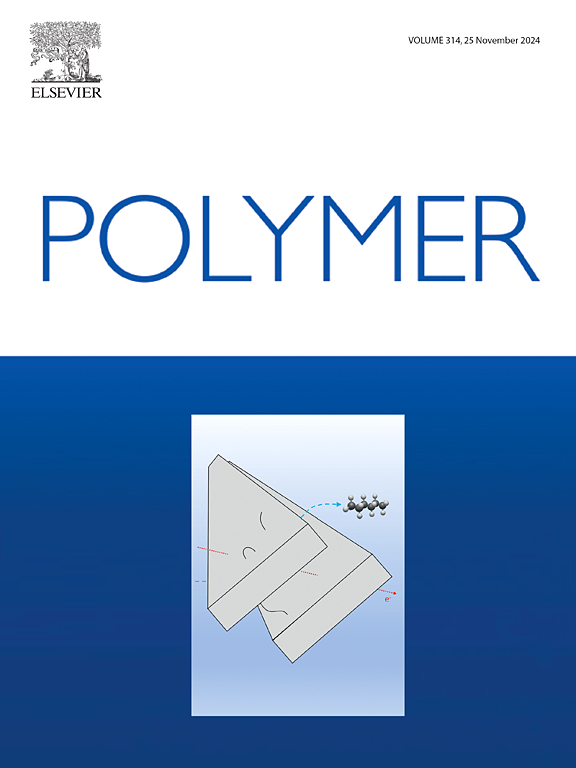Solvent-exchange strategy induced robust eutectic solvent-based gel polymer electrolytes for lithium metal batteries
IF 4.1
2区 化学
Q2 POLYMER SCIENCE
引用次数: 0
Abstract
Instability resulting from inferior mechanical properties and the growth of lithium dendrites hinders the application of gel polymer electrolytes (GPEs) in lithium metal batteries. In this work, a solvent exchange strategy was developed to fabricate a polyvinylidene fluoride (PVDF)-based gel polymer electrolyte (PFGPE-x). This process induces conformational changes in the extended PVDF chains, enhancing polymer-polymer interactions and promoting microcrystal formation, which leads to a uniform and robust physical crosslinking network. The fabricated PFGPE-x electrolyte exhibits robust mechanical properties with a Young's modulus up to 47.9 MPa, which is much higher than the modulus of the previously reported PVDF-based GPEs. The N-methyl acetamide (MAc)/lithium bis(trifluoromethanesulfonyl)imide (LiTFSI)-derived deep eutectic solvents are integrated in the polymer backbone via hydrogen bonding, forming continuous ion channels and facilitating the formation of β crystal phase in PFGPE-x. Li symmetric cells with PFGPE-4 electrolyte exhibited a long lifespan of over 650 h at a current density of 0.05 mA cm−2. The LFP|PFGPE-4|Li cell shows an initial discharge capacity of 98.7 mAh g−1, and maintains 90.7% of initial capacity after 50 cycles at 25 °C. This work presents a novel approach to constructing GPE with high modulus for high performance lithium metal batteries.

求助全文
约1分钟内获得全文
求助全文
来源期刊

Polymer
化学-高分子科学
CiteScore
7.90
自引率
8.70%
发文量
959
审稿时长
32 days
期刊介绍:
Polymer is an interdisciplinary journal dedicated to publishing innovative and significant advances in Polymer Physics, Chemistry and Technology. We welcome submissions on polymer hybrids, nanocomposites, characterisation and self-assembly. Polymer also publishes work on the technological application of polymers in energy and optoelectronics.
The main scope is covered but not limited to the following core areas:
Polymer Materials
Nanocomposites and hybrid nanomaterials
Polymer blends, films, fibres, networks and porous materials
Physical Characterization
Characterisation, modelling and simulation* of molecular and materials properties in bulk, solution, and thin films
Polymer Engineering
Advanced multiscale processing methods
Polymer Synthesis, Modification and Self-assembly
Including designer polymer architectures, mechanisms and kinetics, and supramolecular polymerization
Technological Applications
Polymers for energy generation and storage
Polymer membranes for separation technology
Polymers for opto- and microelectronics.
 求助内容:
求助内容: 应助结果提醒方式:
应助结果提醒方式:


